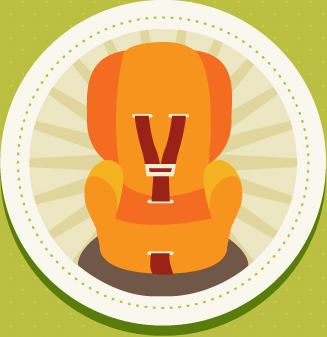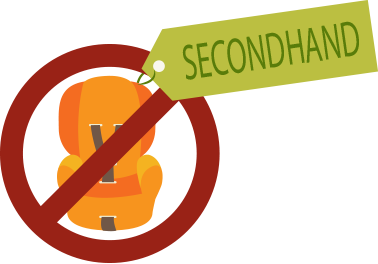Car Seat Safety Tips
Free Auto Insurance Comparison
Compare Quotes From Top Companies and Save
Secured with SHA-256 Encryption
NOT ONLY DO YOU NEED TO KNOW THE LAWS REGARDING CHILD SAFETY SEATS, YOU
ALSO NEED TO KNOW HOW TO CHOOSE THE RIGHT ONE AND HOW TO SAFELY
INSTALL IT IN YOUR VEHICLE.
60% of all crashes happen on roads where the speed limit is 40 miles per hour or slower.
Nearly three quarters of all accidents happen within 25 miles of home.

In 2009, 179, 000 children were injured in accidents while in car seats.





4 out of 5 car seats in vehicles right now are installed and used incorrectly with approximately three mistakes for every car seat.

Before you can bring a new baby home from the hospital, you will need a car seat in place. That seat will
need to be replaced as the baby gets older. It is important to know when it is time to change your seat
and what to look for when you are buying one.
CHOOSE THE RIGHT STYLE AND SIZE CAR SEAT FOR YOUR CHILD
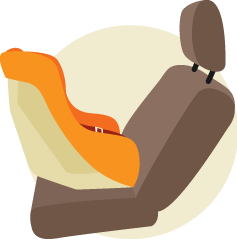
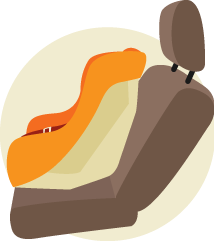
An infant seat is needed until the baby reaches a certain height/weight
plus age combination. For an infant, the recommendation is for a rear
facing child seat until they reach the age of two.
Once the baby reaches the age, height and weight recommendations for
forward facing seats, choose a model that will allow him to sit correctly,
at the right angle with his airway opened. The middle of the back seat is
the safest place, regardless of the type of seat that is being used.
CHECK YOUR CAR SEAT




Check for the expiration date on your car seat. As standards change, car
seats will be phased out and may not meet current recommendations or be legal any longer. Most seats will have an expiration date for six years or less.
Always check for recalls on your car seat. Once you bring
your new seat home, fill out the warranty information to
register it ensuring that you will be notified if there are any
recalls or problems with your seat.
BOOSTER SEAT FOR OUTGROWN CHILD

For a child who has outgrown a car seat, a booster seat may be used. Most children are not tall enough for standard seat belts. In addition, their bones may not be strong enough to protect them in a crash.
INSTALLATION
IS CRUCIAL
Even the best car seat in the world will not protect your child if it is not installed correctly. Even people who think they know exactly what they are doing may make mistakes or may just put the seat in for a “few minutes”, knowing it is not hooked in correctly. Always make sure that the child is strapped into the seat correctly and that the seat is installed in the proper way as well.
1. READ MANUAL BOOK

Spend some time with the car seat owner manual. Look at diagrams for proper placement. Your vehicle guide may also have some general information for how to install car seats as well.
2. PRACTICE PUTTING THE SEAT
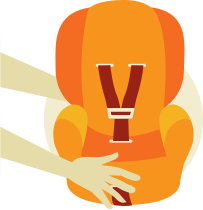
Practice putting the seat in and out without the baby in it so that you can take your time and remain calm. In theory, your ability to put the seat in and out should be second nature before the baby arrives.
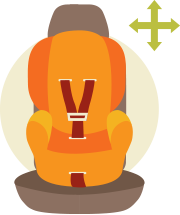
3. TEST THE SEAT
Once the car seat is in, wiggle it back and forth, front to back. It should not move more than an inch in any direction.
4. ASK FOR HELP

If you are at a complete loss for how to installyour car seat, ask for resources to help you learn the ins and outs.
Further Assistance for your car seat questions
If you have additional questions, concerns or just cannot get the car seat installed properly, there are different resources that you can go to, depending on the area that you live in. Small towns and rural areas may be a bit limited to the number of resources that are available. For help you can go to the following places:
1. STATE HIGHWAY OFFICER

The State Highway patrol office will often
check your car seat placement for you.
2. HOSPITAL

The hospital where your baby is born may have a car seat program that will not only let you rent one for a nominal fee but will show you how to correctly install it as well.
3. SOME COMMUNITY

Some community outreach programs offer inspections as part of health fairs and other programs.
4. SOME PROGRAMS

Programs such as Women, Infants and Children (WIC) will
also help with car seat placement.

PAY ATTENTION TO YOUR SEAT
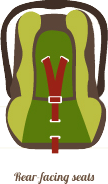

Make sure that you are keeping an eye on height and weight limitations of the seat – being prepared to buy a new one when the child outgrows his/her current seat.
DO NOT MODIFY CAR SEAT
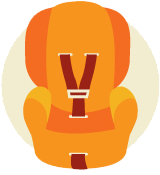


Do not attempt to modify or change the car seat in any way. Do not add toys or other items that can become an additional danger during an accident.
COVER YOUR SEAT


Do not use the car seat without the covering or with a makeshift covering. If it needs to be washed, make sure that it will be returned to the seat’s base before the next trip in the car.
CHILD SAFETY


Do not allow your child to travel in anyone’s car without the right car seat and that anyone who is transporting your child knows how to install the seat they are using. Don’t be afraid to lecture grandma and grandpa about car seat safety
NO KIDS IN FRONT SEAT

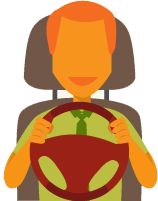
Until your child meets all of the recommendations for your state regarding age, height and weight, do not allow him to sit in the front seat, especially if your car has air bags.


